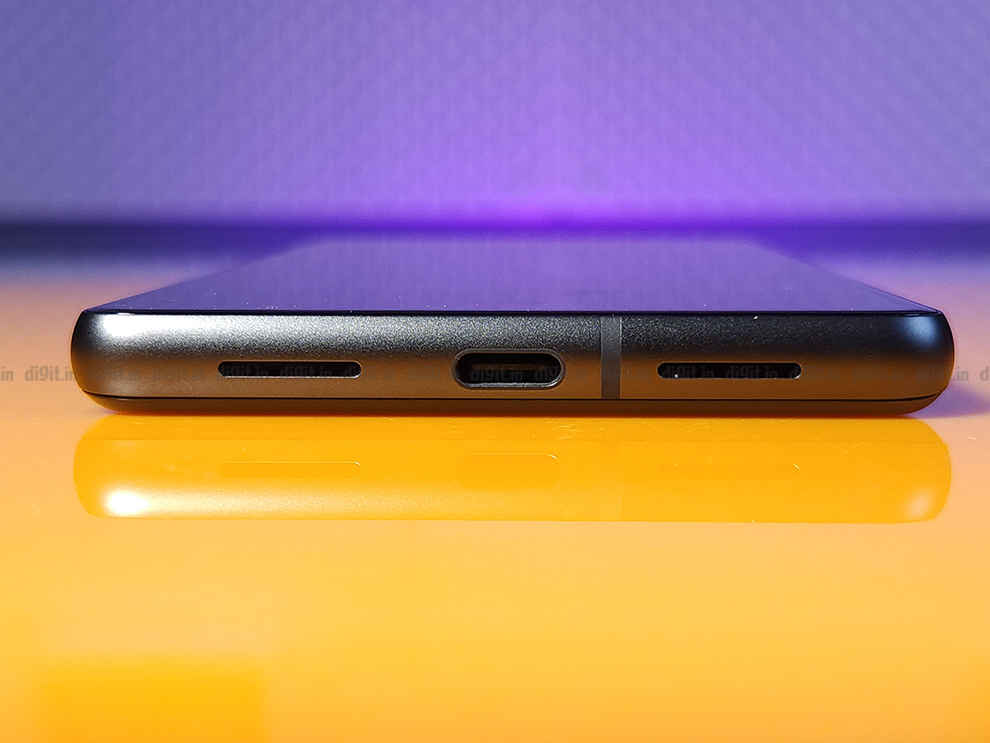Pixel fans will rejoice knowing that the Pixel 7 offers everything that makes a Pixel phone desirable – fantastic camera performance and optimised and clean software. Add to that a bright OLED display, decent battery life, and a compact build, and you have what could be a winning Android smartphone formula. However, this phone doesn't hold a candle to the raw performance offered by the iPhones and Samsung flagships of this world.
After four long years, Pixel lovers can finally rejoice since Google has brought back the Pixel series of smartphones to India. While the brand did intermittently launch the Pixel A-series (Pixel 6a review) devices in India, the company has kept its premium-tier of smartphones out of India since the Pixel 3 series launched back in 2018. Fans of the Pixel experience have waited with bated breath for the potential return of these premium-tier Pixel phones in India – and now, they’ve got what they wished for. We recently reviewed the Pixel 7 Pro and concluded that “while it may not be a phone for gamers, it could very well be the perfect Android phone for every other premium segment user.” Priced at a more palatable ₹59,999, the Pixel 7 could be the more value-for-money proposition from Google for those vying to pick up one of the latest Pixel 7 series phones. The Pixel 7 builds on the Pixel 6 from last year, bringing some incremental upgrades with it. Let’s see how it fares in our review.
Google Pixel 7 Review: Build and designThe Pixel 7 retains the distinctive design cues Google popularised on the Pixel 6 series. It is a glass sandwich with an aluminium frame. The two-tone colour profile is gone and instead, we’ve got a single colour separated by the visor-like camera module. This bump is now made of textured aluminium – replacing the glass on its predecessor – and honestly, it gives the phone a more premium look.

The camera module strip is a really distinctive look that sets the phone apart from others. Google has used 100 per cent recycled aluminium in the construction of the Pixel 7, so props to the company for that.

This camera module does eliminate wobbling when the device is placed flat on a surface, but one negative is excessive dust accumulation in the ridges of the camera module which you will need to wipe down from time to time.

The smartphone also sports rounded edges which makes one-handed operation a breeze; also aided by its compact form factor. The phone is also decently lightweight, weighing in at 197g. It also comes with an IP68 rating, making it dust and water-resistant. There’s the SIM tray on the left, the USB-C charging port on the bottom, and the power and volume buttons on the right.
Google Pixel 7 Review: DisplayThe Pixel 7 houses a compact 6.3-inch OLED display with 1080 x 2400 FHD+ resolution and 90 Hz refresh rate support. Unlike its more expensive sibling, this one isn’t equipped with an LTPO panel though. The display is capable of smartly adapting its refresh rate based on the content displayed on it. This helps in battery life conservation. However, the phone supports only 90 Hz refresh rate, which seems inadequate at this price point where most of the competition offers 120 or even 144 Hz refresh rate support.

Refresh rate aside, the display is pretty fantastic. It is impressively bright; reaching 1002 nits of peak brightness outdoors on auto brightness mode. The viewing angles are great and off-axis colour discolouration is almost negligible. Additionally, the display is vibrant and HDR10+ compliant, so you can enjoy content on OTT services in HD, which is great. You also get a set of stereo speakers that are loud and crisp enough to warrant watching content without a pair of headphones occasionally.
Google Pixel 7 Review: CameraComing to the section Pixel fans would possibly be the most excited about – camera – the Pixel 7 comes with the same 50 MP primary lens + 12 MP ultrawide lens configuration as its predecessor. However, there are improvements in overall picture quality and image processing. The primary camera outputs quad-binned 12.5 MP images and as one would expect from a Pixel phone, the main camera’s output during the day is excellent with good enough dynamic range. Images have a solid amount of detail but retain a cool tone with darker shadow areas.

Colours appear natural but vibrant enough to be put on social media unedited, however, you won’t get iPhone or Samsung saturation levels and the tone is much cooler. The darker shadow areas do lack a tiny bit of detail in comparison to other flagship camera phones, but it is insignificant enough detail loss to call it a nitpick. Photos taken at 2x zoom are surprisingly crisp even though the phone doesn’t have a dedicated telephoto camera; thanks to Google’s Super Res algorithm that ups the quality of digital zoom photos.



The ultrawide camera maintains similar colours and exposure as the primary lens and photos taken from these lenses look consistent, which we love. There’s minimal softness in the edges and the noise is well-controlled. However, this lens has no autofocus which means you may end up with some blurry shots. Furthermore, there’s no macro mode as well.

Portrait shots are labelled 1x and 2x in the camera app but the magnification is more on the lines of 1.5x and 3x. 1x portrait shots look great with natural bokeh effect, good edge detection, and quite a bit of detail. However, the 2x portrait shots look unnaturally oversharpened and the background blur is far less in comparison to 1x shots.
Low-light images look fantastic, for the most part, with minimal noise and oversharpening. Optimisations made to the Tensor G2 chipset have resulted in truly impressive nighttime photography. Using Night Sight, the Pixel 7 tries to retain the darkness of nighttime; something that many forego to keep the shot as brightly lit as possible. And in our opinion, this looks more natural and pleasing to the eye, but it is subjective. Photos from the ultrawide shooter taken in low light are a bit softer on the details but 2x shots are where the weakness is more apparent. Low-light selfies are decent – definitely not the best in the business – with occasional soft shots with some noise.
Speaking of selfies, the phone houses a 10.8 MP selfie shooter that is proficient enough during the day. While the colours are nice and vibrant, the details of selfie photos could use a boost. In ideal daylight conditions, you can get a detailed shot but if there’s a lot of backlighting, the shot is significantly softer.
The video recording capabilities of the Pixel 7 are capped at 4K at 60fps on all cameras; there’s no 8K recording but honestly, it’s a feature we’d rather have when it is better optimised. The videos have decent dynamic range, good colour, and solid detail. It doesn’t take a genius to figure out the inspiration behind modes such as Active Stabilization and Cinematic Blur, but the implementation is not bad at all for Google’s first attempt at it. Additionally, photo editing features Magic Eraser and Photo Unblur work freakishly well and add to the overall appeal of the device.
Google Pixel 7 Review: PerformanceThe Google Pixel 7 houses the company’s second rendition of its custom chipset built in-house – the Tensor G2. You get a sole 8 GB RAM and 128 GB storage variant in India, which is upsetting. We would have liked the option to buy the 256 GB variant here as well, but it is only available in the global market. The chipset is built on a 5nm fabrication process and claims to offer up to 60 per cent improved performance over the first-gen Tensor chip.

However, the SoC still struggles to match up to the heights achieved by the Qualcomm Snapdragon 8 Gen 1 and Apple A16 Bionic SoC. We compared it against the Samsung Galaxy Z Flip 4 and the iPhone 14 in several benchmarking tests and it clearly lagged behind in numbers. However, note that the Pixel 7 is much cheaper than these flagships and in our opinion, the price-to-performance ratio is still quite impressive.

However, while the frame rates were stable enough when gaming, the phone did heat up significantly and towards the end of the half-hour mark – there were a couple of instances of some minor lag. We also found that the phone has some throttling issues when pushed with intensive tasks. In the CPU Throttling Test, the phone’s chip throttled 64 per cent of its maximum performance, so this phone isn’t our top recommendation for power users or avid mobile gamers.

However, the Tensor G2 chip shines in other areas – specifically Pixel experiences such as live translation, Photo Unblur, and Cinematic Mode. The software is also incredibly clean and while the screen only supports 90 Hz refresh rate, it still feels wonderfully smooth. Google also claims it is more power efficient than its predecessor which is always appreciated. And while this isn’t the fastest phone in the segment, it still offers smooth performance in most tasks and a fantastic software experience.
Google Pixel 7 Review: Battery lifeIn the battery department, Google made the decision to reduce the battery capacity of the Pixel 7 slightly compared to its predecessor, which may raise a few eyebrows. However, considering Google is claiming that the Tensor G2 is a more power-efficient processor – there isn’t a tangible detriment in battery life. The phone is equipped with a 4,355 mAh battery and supports 20 W wired charging.
The Pixel 7 is a device that can easily get most users through a day’s worth of usage without breaking a sweat. If you’re a heavy gamer, you may have to charge the device sometime late evening or at night. However, we noticed that the phone loses a lot of battery when on standby, which could be due to the always-on display and the lack of an LTPO panel which can allow the refresh rate to be brought down further.

Still, the battery life should be good enough for most users. In our 4K video loop test, the phone survived about 13 hours which is a decent enough result. The 20 W charging speed though is just too slow to be competitive in 2022. A full charge from 0 to 100 per cent takes 1 hour and 40 minutes, which is honestly a sluggish speed now. The phone also supports 20 W wireless charging on any Qi-compatible wireless charger.
Google Pixel 7 Review: VerdictPixel fans will rejoice knowing that the Pixel 7 offers everything that makes a Pixel phone desirable – fantastic camera performance and optimised and clean software. Add to that a bright OLED display, decent battery life, and a compact build, and you have what could be a winning Android smartphone formula. However, this phone doesn't hold a candle to the raw performance offered by the iPhones and Samsung flagships of this world. Nevertheless, priced at 59,999, we deduce that this would be the more popular Pixel "flagship" smartphone, and rightfully so, because we believe it is better bang for your buck than its Pro counterpart. Other options in this price segment include the OnePlus 10T, Xiaomi 12 Pro, and the iPhone 12 (if you don't mind going for a capable two-year-old phone).
from Mobile Phones Reviews https://ift.tt/YX7qlC9

No comments:
Post a Comment